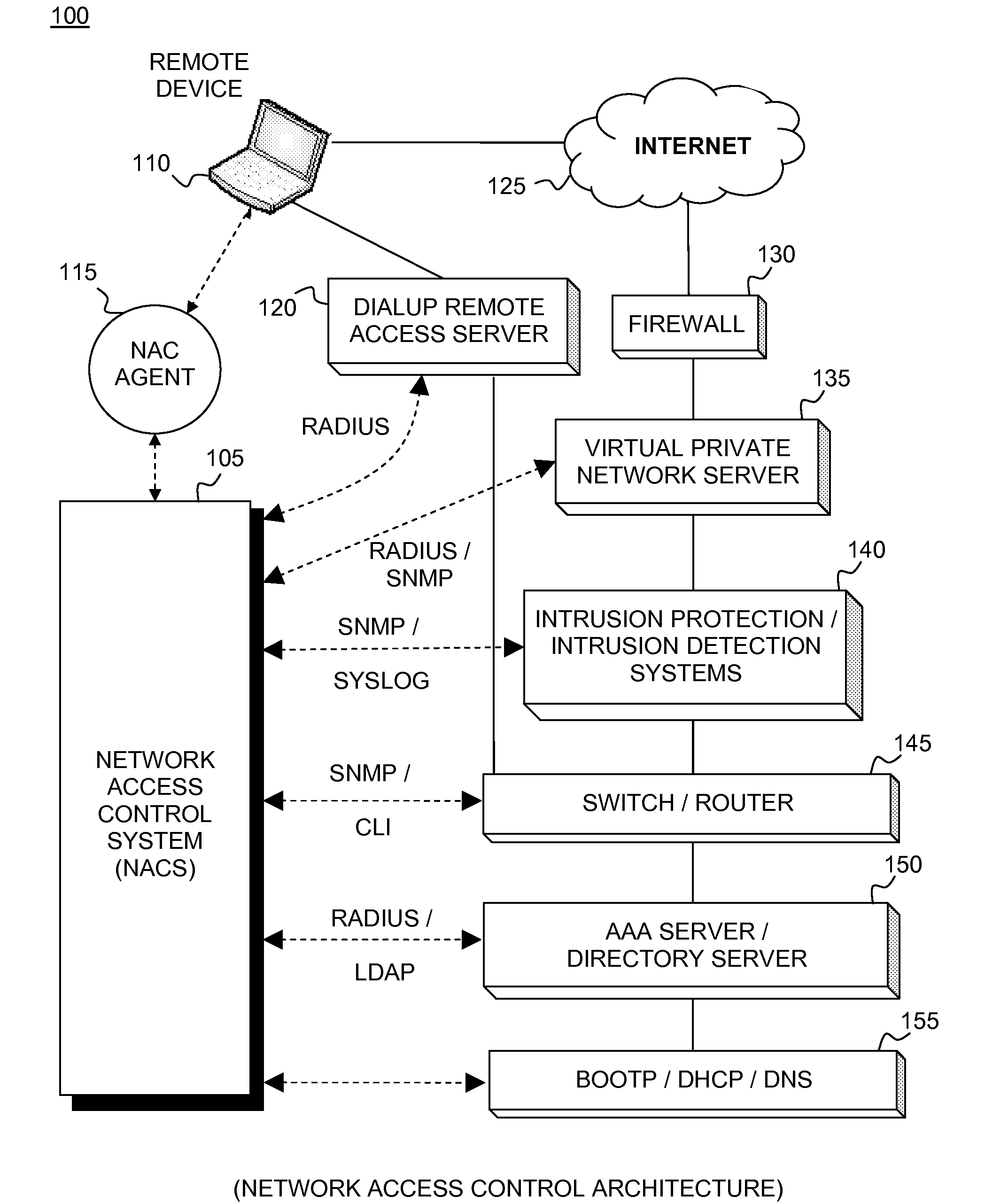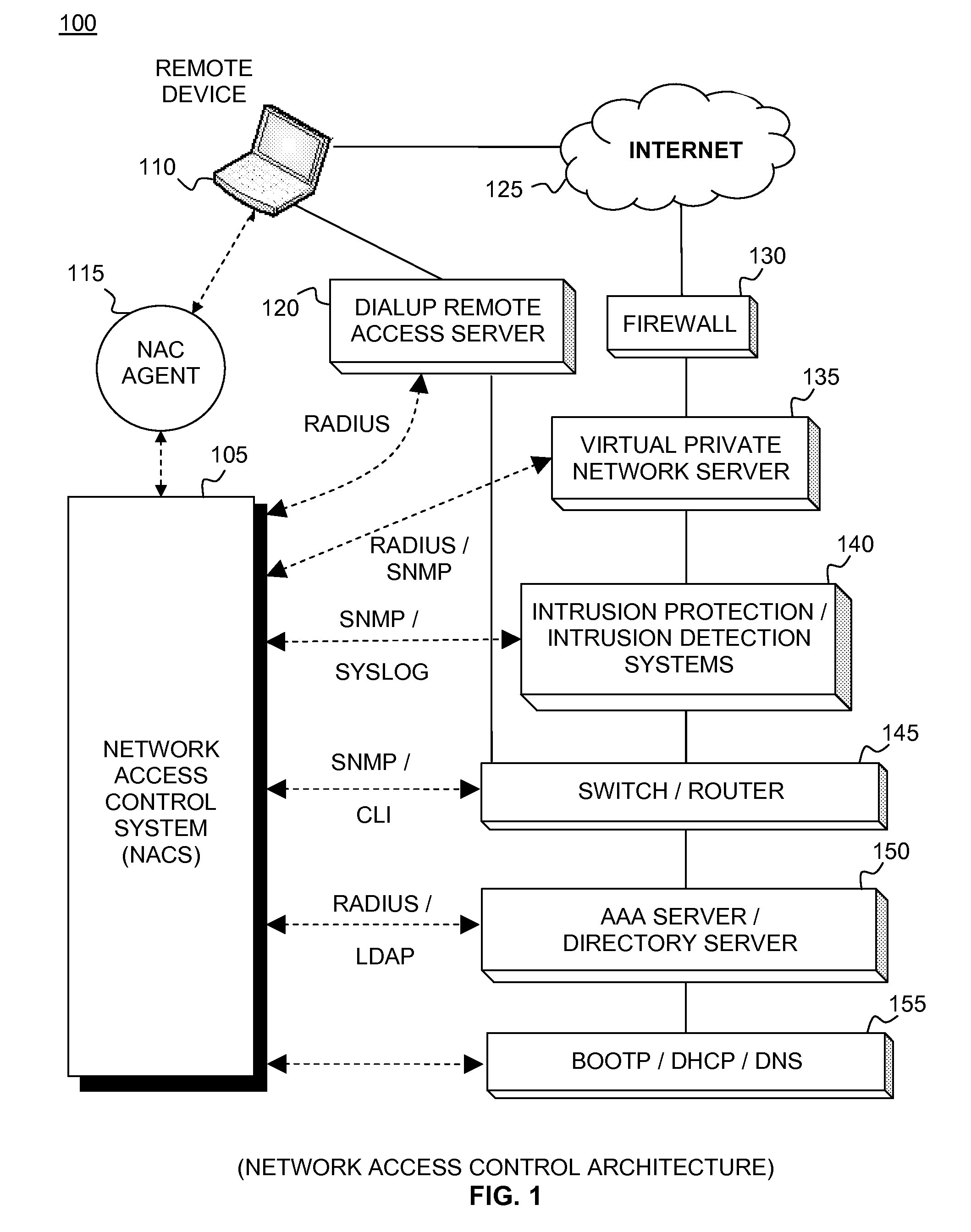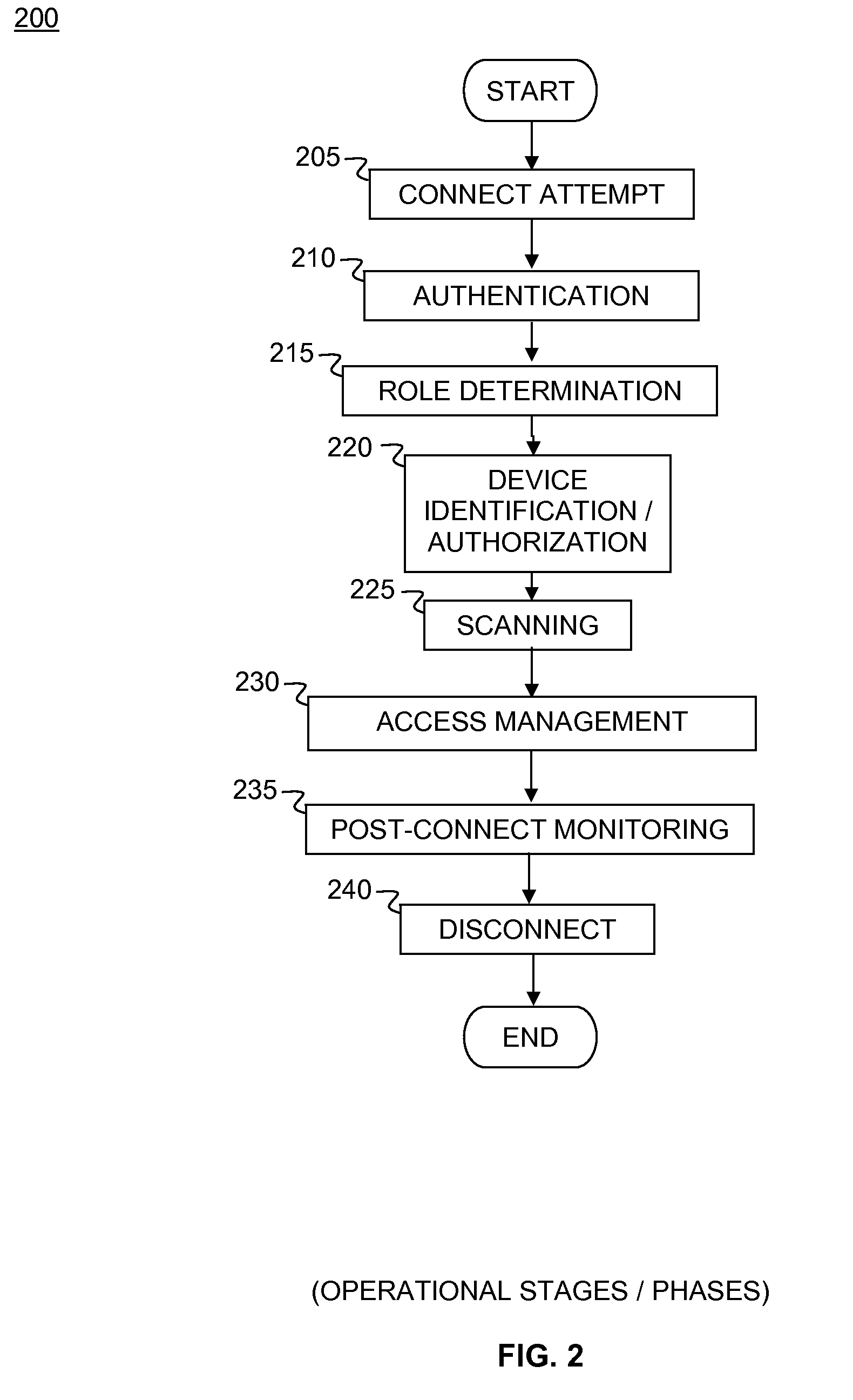Network access control system and method for devices connecting to network using remote access control methods
a network access control and remote access control technology, applied in the field of computer communication security, can solve the problems of increasing the need for and complexity of network access control and security
- Summary
- Abstract
- Description
- Claims
- Application Information
AI Technical Summary
Benefits of technology
Problems solved by technology
Method used
Image
Examples
embodiment 100
[0043]FIG. 1 is a top level block diagram illustrating a network access control architecture embodiment 100. In this figure, dotted lines represent communication between elements and solid lines represent logical connections between elements. The elements may exist on separate systems or may be combined to coexist on systems in different combinations. Embodiments contain different combinations of elements, not all of which are necessary, dependent upon individual network designs. Basically, Network Access Control System (NACS) 105 supports multiple communication interfaces. Users 110 can connect to a private network from a remote client through a Virtual Private Network (VPN) over the internet 125 or through a dialup connection 120. Dialup Server 120 incorporates network elements including but not limited to switches and routers 145. In embodiments, internet access 125 can incorporate firewall 130, VPN server 135, intrusion protection / intrusion detection systems 140, switch / router 1...
embodiment 300
[0047]FIG. 3 is a simplified flow chart of an authentication process embodiment 300 configured in accordance with one embodiment of the present invention. It comprises steps 205 and 210 of FIG. 2. Connection attempts 305 proceed to a remote access device (RAD) which authenticates connecting users to the Network Access Control System (NACS) using RADIUS 310. If configured to use an external authorization server 315, the NACS further authenticates the user with the external authentication server using RADIUS or LDAP 320. At authentication decision 325, if authentication 310 is unsuccessful, NACS instructs RAD to reject the attempt, and the user-connection is disallowed 330. If authentication 310 is successful 325, the process flows to capture user identity 335, capture RAD location 340, and determine authorization 345. The process continues to role check of FIG. 4. In each case, RADIUS is used to provide authentication for connecting users and to integrate RAD with NACS. It is not nec...
embodiment 400
[0050]FIG. 4 is a simplified flow chart depicting authentication process embodiment 400. Basically, from obtained user ID and RAD 405, role-mapping within the NACS for the user ID and RAD is checked 410. Role mapping is a feature that enables identity-based network assignment. If no mapping is found at 410, respond without a network access policy name 420 and continue to the step of allowing client on the network with access restricted by default filters 425 configured on the RAD. Filters can take different forms and the actual manifestation is determined by the specific RAD. If mapping is found at 410, respond with network access policy name 415, and client is allowed on the network designated by a specific network access policy with access restricted by filters 425 defined by the policy. Next, agent / authorization scanning is run 430 as the process continues to Agent Authorization of FIG. 5A. Note that agent execution on the host is always required during the connection process for...
PUM
 Login to View More
Login to View More Abstract
Description
Claims
Application Information
 Login to View More
Login to View More - R&D
- Intellectual Property
- Life Sciences
- Materials
- Tech Scout
- Unparalleled Data Quality
- Higher Quality Content
- 60% Fewer Hallucinations
Browse by: Latest US Patents, China's latest patents, Technical Efficacy Thesaurus, Application Domain, Technology Topic, Popular Technical Reports.
© 2025 PatSnap. All rights reserved.Legal|Privacy policy|Modern Slavery Act Transparency Statement|Sitemap|About US| Contact US: help@patsnap.com



